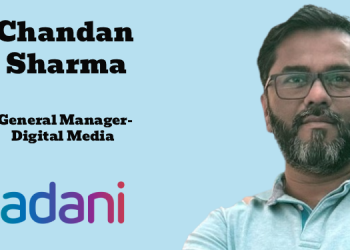We Indians love our entertainment—be it movies, soaps, reality shows, or sports, it’s part of our daily diet, consumed with unbridled enthusiasm. In this pursuit of entertainment, the good old television set that served us well for decades has run its course. Led by technological developments and the unparalleled internet penetration rates—more than 900 million internet users in 2023—the television game has changed, and for good. Smart TVs today can accomplish so much more. They are not relegated to being a one-way viewing experience for viewers. With the independent operating systems powering Smart TVs, the humble television set has become a veritable powerhouse of entertainment that delivers highly customized experiences for viewers across age brackets.
The heart and soul of the modern-day Smart TV is the independent operating system, a platform that equips the television set with a plethora of state-of-the-art features that have revolutionized the viewer’s experience. Some of the clear advantages offered by independent operating systems are:
Faster Time to Market
Independent OS platforms are generally more agile, offering quicker integrations and reduced red tape, helping OTT apps launch or update their services faster. Some of the global operating systems are known to take weeks or even months to offer licensing to TV brands or manufacturers. If these products take so long to come to market, this only means that it takes just as long for OTT apps to reach their potential audience. In a competitive market like today’s, time is of the essence and a faster time to market is an important aspect.
Direct Relationship with OEMs
Independent OS providers often work closely with OEMs, allowing OTT apps to explore bundled partnerships or pre-installation opportunities directly on Smart TVs. This allows for a great marketing initiative and strategies that can help the OTT reach a much wider audience. They can also tap into potential new viewers with the help of partnerships with more OEMs who supply to another region. In fact, this may be something of significant use to regional OTT apps who may want to tap into a specific region.
Higher Brand Visibility
Independent OS providers can allow OTT apps to retain greater visibility and branding, by working on close exclusive or dedicated deals. This includes things like adding their logos to the TV boxes, expanding brand visibility immediately without guessing what OTT apps are inside the smart TV. These initiatives help build a stronger relationship in a competitive industry.
Reaching fragmented market
In addition to large brands, independent Operating Systems work with a micro-level market which is usually fragmented and less process driven. Most of the time it might be impossible for many large companies to even reach or cooperate with such companies, however by working with independent OS, they can reach. This can be done through the help of the trusted network of OEMs and TV brands that independent Operating Systems work with.
Lower Dependency Risks
By partnering with independent platforms, OTT apps reduce their dependency on ecosystems that may be monopolistic or even have competitive business to the OTT players, ensuring strategic flexibility and avoiding risks tied to unilateral policy changes by large tech companies. To give some more pointed perspective to this, it should be a fair market for all OTT applications when working with an OS. Some global OS which may have their own OTT apps may always favor those apps and sales over other partnerships.
Independent Operating Systems work especially well in making sure to provide fair market experience to the stakeholders, with minimal red tape to work in synergy with the partners.
(Views are personal)

















